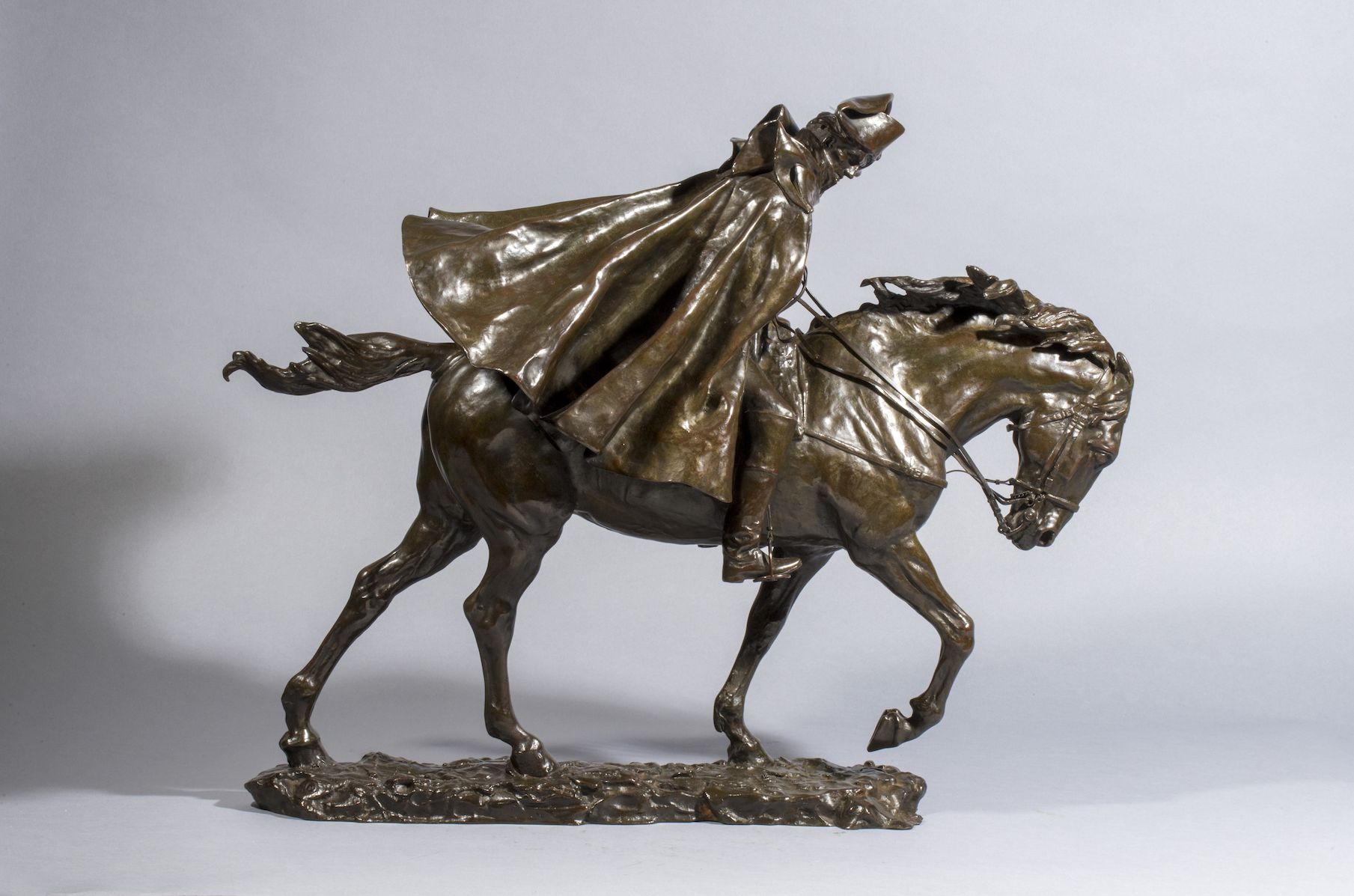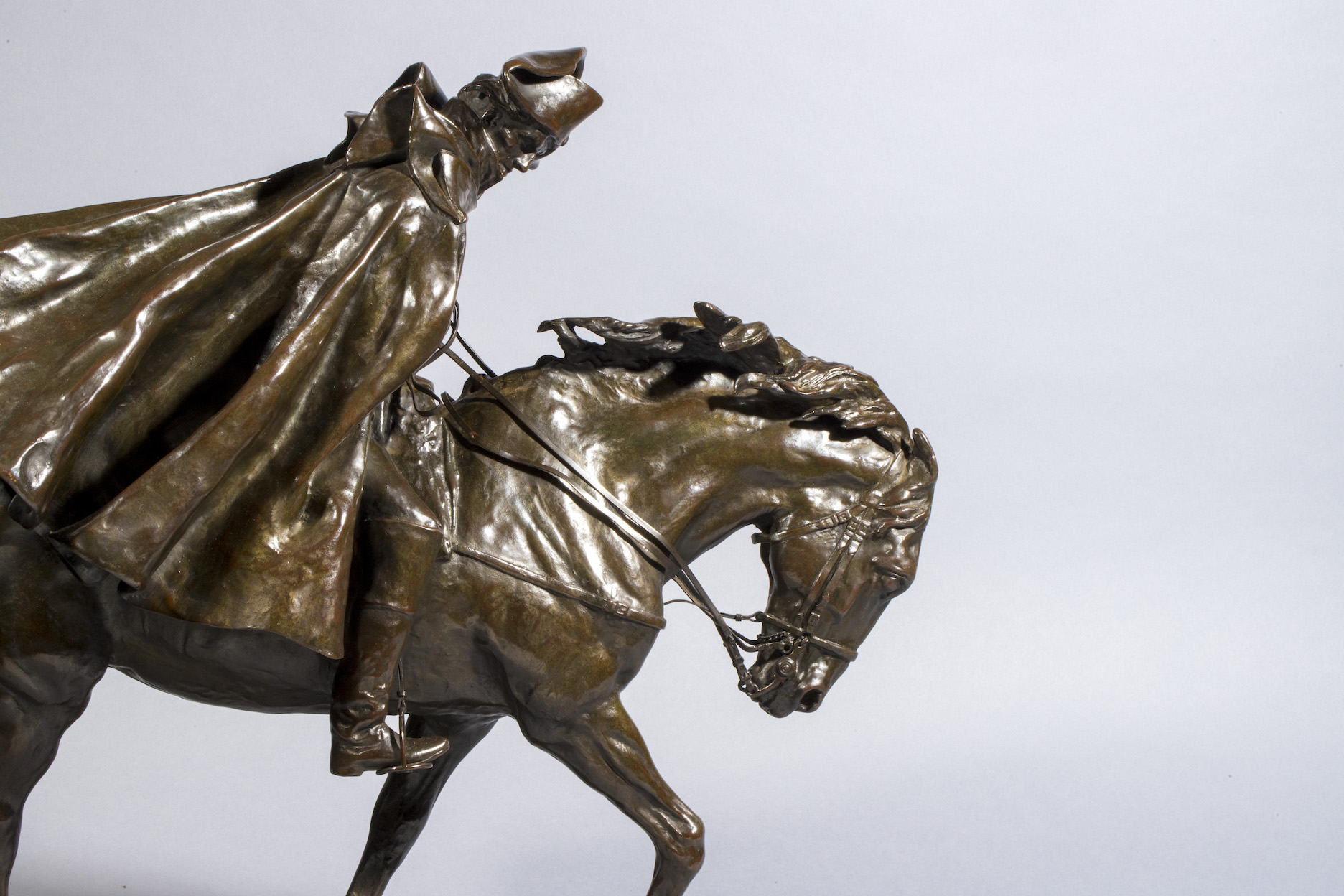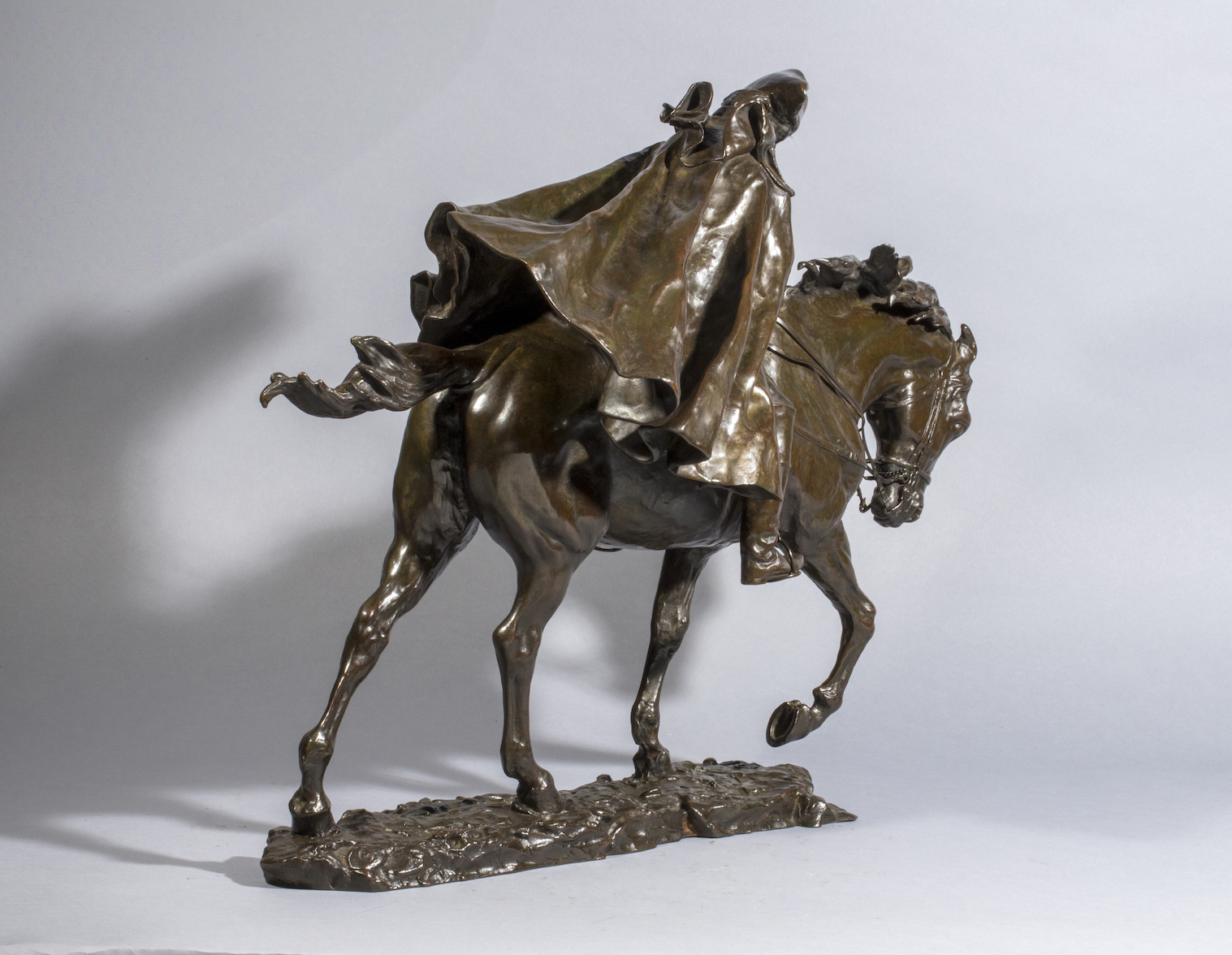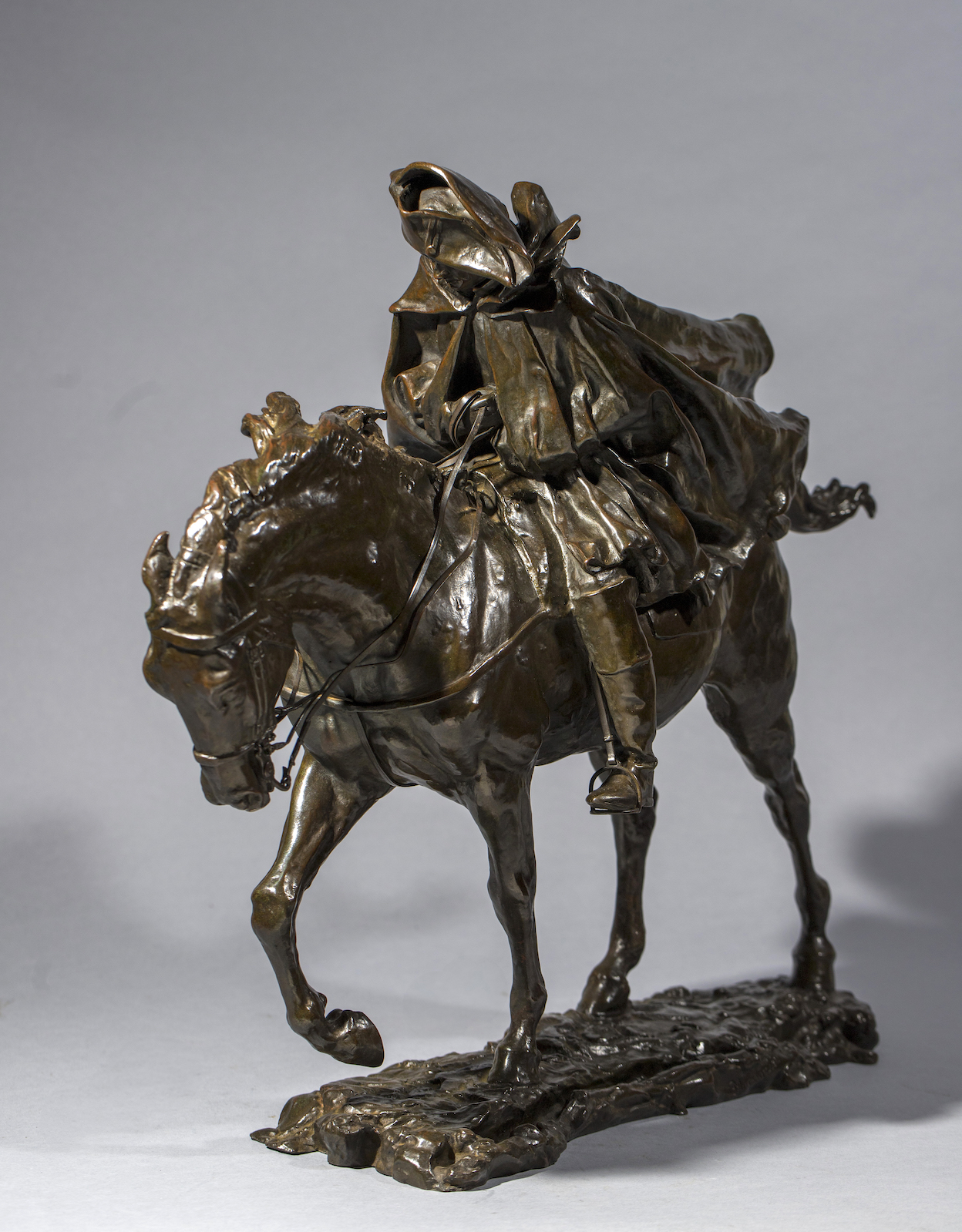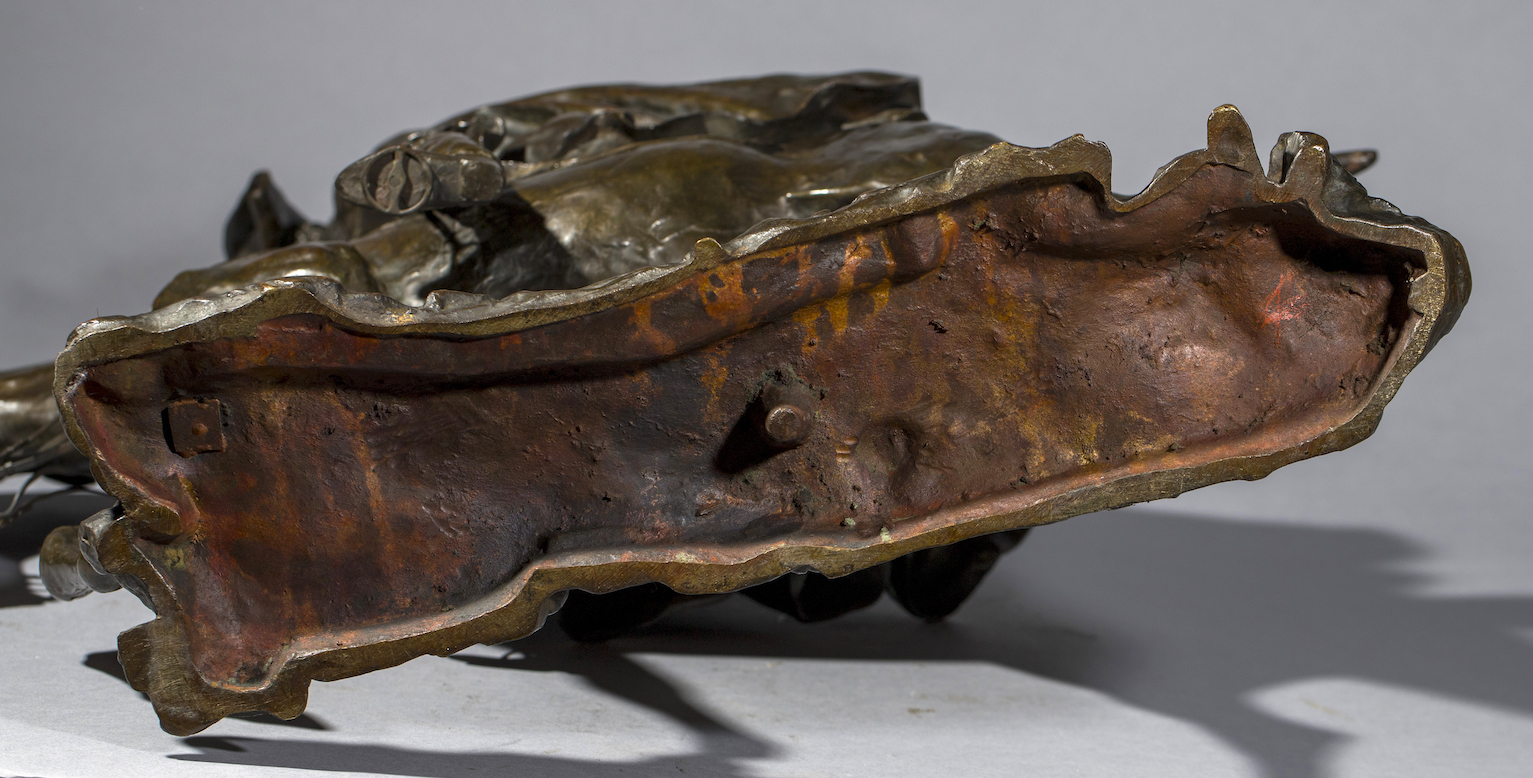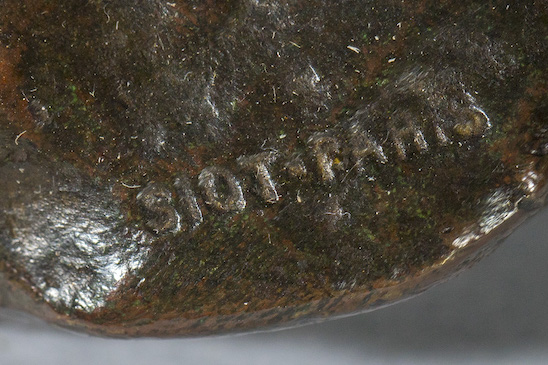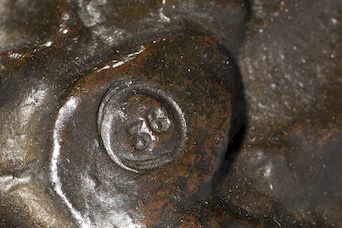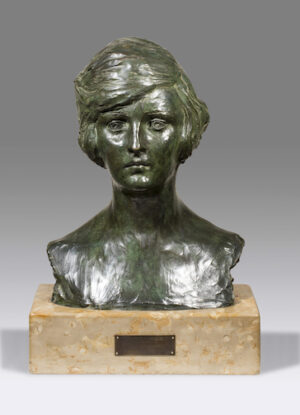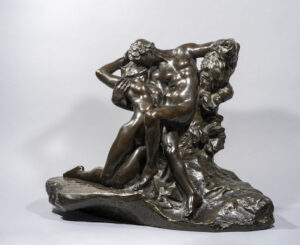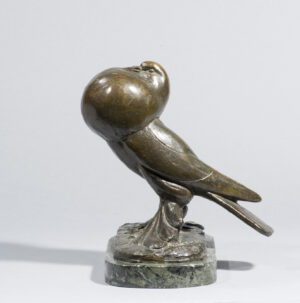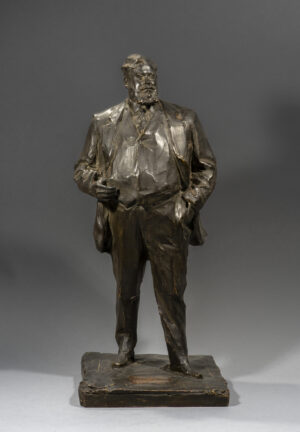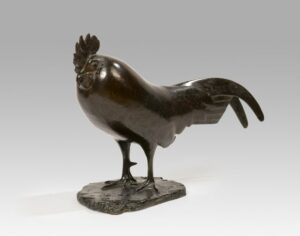Description
The sculptural work of Ernest Meissonier, an artist renowned for his paintings of military scenes, was only revealed after his death in 1893 through two exhibitions: one at Galerie Georges Petit and the other at the École des Beaux-Arts. This artistic pursuit, which he kept private and described as giving him an “immediate creative exhilaration,” served solely to prepare his paintings, enhancing their realism. His almost scientific pursuit of precision led him to create wax models, whose malleability and three-dimensional nature allowed him to better understand spatial compositions, movements, and lighting effects for his paintings.
Meissonier is believed to have begun using this technique as early as 1848, but he systematically employed it from 1860 onward in preparation for his ambitious project: painting the Napoleonic epic on five canvases. To this end, he created nineteen wax statuettes, nearly all equestrian, with the same meticulous attention to detail as if they were intended for casting—though he never intended to have them produced as sculptures. Upon his death, these wax models were divided among his second wife and his children from his first marriage, Thérèse and Charles. The latter later sold the reproduction rights to the Galerie Georges Petit, which decided to have some of them cast in bronze, commissioning the Siot-Decauville foundry. Among these was The Traveler, also known as Rider in the Wind, Marshal Ney, or Napoleon During the Retreat from Russia.
This sculpture is undoubtedly Meissonier’s most famous three-dimensional work. It depicts a rider wearing a bicorne, struggling with his mount against the wind. The man, his cloak billowing, leans into the horse’s neck to counterbalance the animal’s effort as it trudges forward, head bowed, mane and tail swept by the elements. Although the rider is intentionally left unidentified, the dramatic setting unmistakably evokes the harrowing conditions endured by the officers of Napoleon’s army during the Russian campaign. The dramatic effect does not come at the expense of a highly detailed study of anatomy and movement.
Examining the original wax model, now housed at the Musée d’Orsay, reveals the extraordinary realism Meissonier sought to achieve. The model incorporates a small plaster cast of a horse’s skeleton, a fabric cape shaped to mimic the wind’s effect, leather reins, and a metal armature to support the entire composition. The bronze version retains the dynamic modeling, evident in the musculature of the horse and the swirling motion of the rider’s cape, accentuating the interplay of light and shadow that emphasizes their struggle against the elements.
The model probably dates to 1878, as it has been established that Meissonier’s wax maquettes served as starting points for his paintings—either as standalone studies or as elements within larger compositions (Antoinette Le Normand, op. cit., p. 133). The earliest known graphic work by Meissonier featuring a rider battling the wind, Gust of Wind, was created in 1878. Several subsequent works on the same theme followed, culminating in paintings from 1880 and 1886, known from old photographs. The composition remained a recurring theme, leading to an unfinished painting, Gust of Wind, left incomplete at Meissonier’s death in 1891.
The bronze edition by Siot-Decauville began in 1894. This foundry was renowned for the quality of its patinas, which explored new tonal variations through light cold oxidations that remained stable over time. The edition was limited to 50 casts, each numbered on the base—a relatively novel practice, possibly a requirement set by Georges Petit, the driving force behind the edition. Given the model’s great success, 46 casts were produced and quickly acquired, as early as 1895, by national museums such as those in Lille and Bordeaux. The Siot-Decauville commercial catalog, published for the 1900 Exposition Universelle, confirms that the sculpture was still in production at that time. It probably remained available until the foundry closed in 1926.
Our example, numbered 36, is likely to have been cast between 1910 and 1920.

